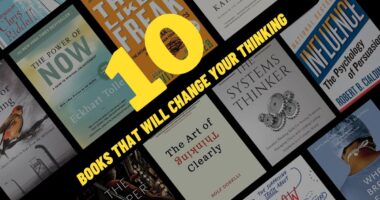An author can choose to tell his or her story in multiple ways. For example, in the first person, such as Murakami’s books, in the second person as Italo Calvino’s ‘If On a Winter’s Night A Traveller’ or in the third person, as Tolstoy’s Anna Karenina. The narrator could be omniscient, or restrictive to a particular character. But increasingly, authors are shifting towards multiple perspective books, such as Game of Thrones by George R R Martin, or Americanah by Chimamanda Ngozi Adichie. This allows the author to get rid of the distance created by omniscience while still giving insight into all characters. Here is why books with multiple POVs are Interesting and engaging.
Why Books With Multiple POVs Are Interesting and Engaging?
More diversity of characters
Of course, the primary benefit of multiple perspectives is that you get to look at a wide variety of characters. This lends versatility to the book. Readers get insight into characters of various genders, races, castes and indeed, worlds. Even the conflicts, ideas and themes that the book explores can be versatile and various.
Each chapter ends on a cliffhanger
Typically, in a multiple POV book, each chapter tells the individual story of one character. And to facilitate interest in the story, the chapter ends on a cliffhanger, leaving you wanting more of the story. This keeps the interest in each individual story alive, and prevents you from becoming detached from one character’s story while reading another’s.

Intersection of storylines is engaging
Often, in the course of the book, the characters who started out as living separate lives meet and interact. The story builds up to this point of climax, when the characters cross paths. This buildup makes the story all the more interesting. This is because you cant wait to see how the characters you’ve been with individually for so long will react and converse with each other.
Creates a lot of buildup
This is an extension of the previous points. Multiple perspectives allow for a lot of buildup, with respect to individual stories (due to cliffhangers) and the overarching story (due to the aforementioned development of plot). In addition, they also allow for intrigue, which is when tension in the plot increases because readers know something that one of the characters doesn’t.

You can view the same event from the perspective of others
Often, characters describe the same event from their unique perspective. This gives us a wholesome understanding of the event, especially in the case of love stories. Reading both (or all) perspectives gives us a kind of complete picture, which is very satisfactory.
You get a holistic understanding of plot and theme
This ties in with the previous point. Along with character arcs, plot arcs are also more intricate here due to multiple storylines. Yet these storylines when put together create a holistic picture of the overarching plot and themes prevalent in the book. The themes are highlighted more and the plot becomes clearer.
You get to pick your favourite and root for them
The best thing about multiple perspective books as a reader is that you get choice and free will. In a third person or first person book, the protagonist is clearly defined and since you follow one story only, there isn’t much scope for distance. You’re forced almost to continue despite the protagonist and his or her connect. Here however, even if you dislike a few characters, you will almost always have one that you absolutely adore, and whose part you eagerly wait for.

Builds connect with the fictional world
With the stories of more characters becoming accessible, we not only know the interior thoughts of them but also the world they inhabit. This allows us to connect with the setting more, even though it may be divorced from us in space and time. Basically, we spend more time in the fictional world, with several characters, and understand more of its society, culture, economics, class systems and more.
Also Read: Books That Teach You About Self-Respect And Self-Love



